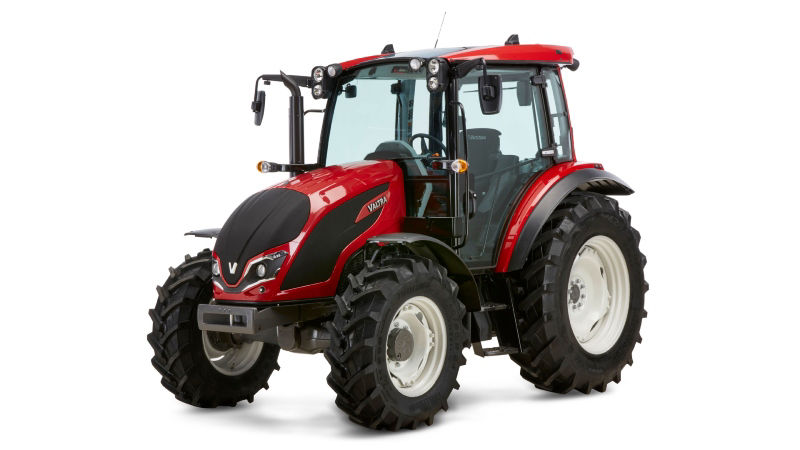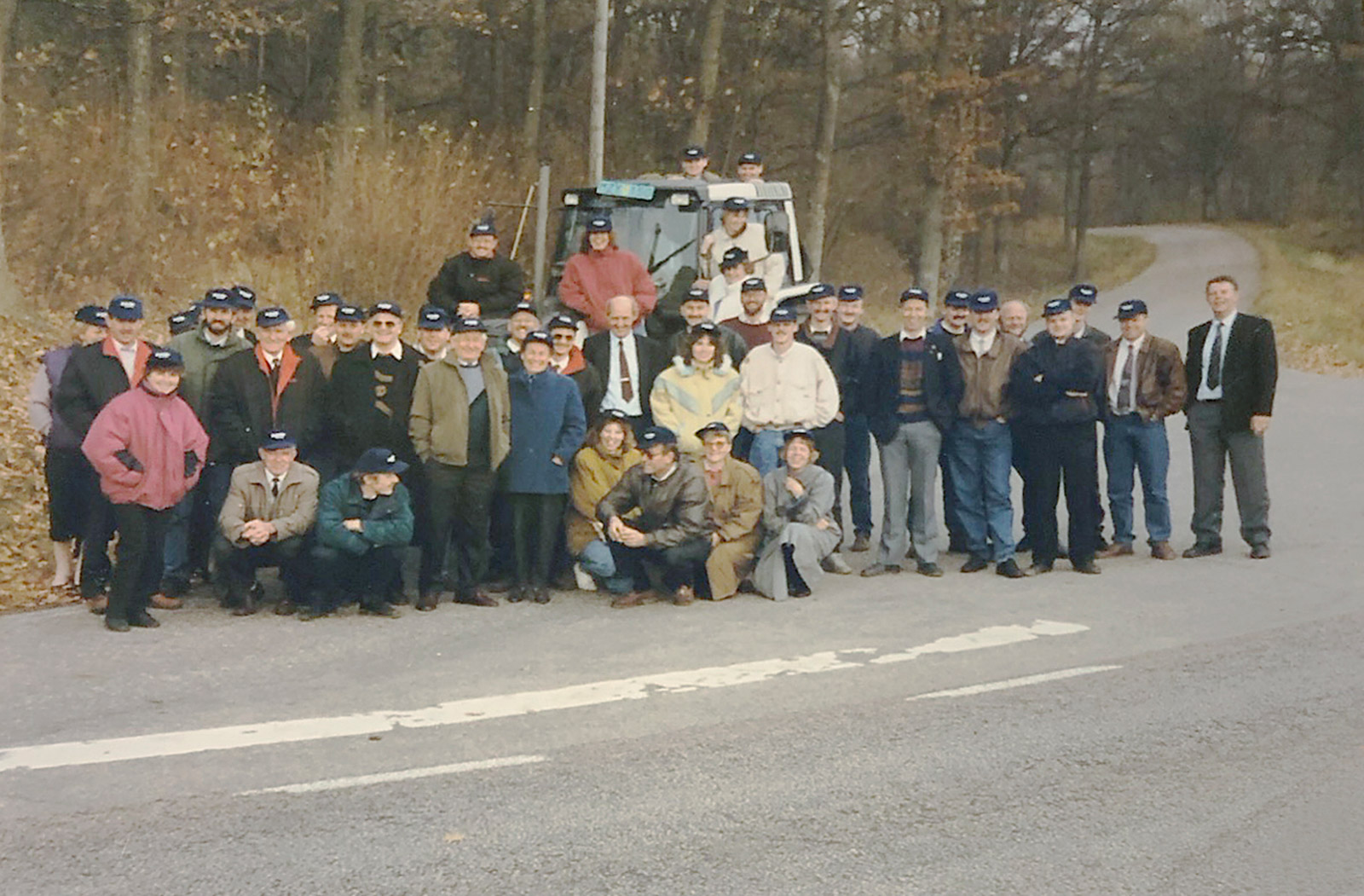In this blog, we look back over the last 40 years of development that led to the popular A Series tractor. From the early Volvo BM Valmet machines and the classic Finnish 305 and 405 models to the modern 5th generation Valtra A Series; we share some of the crucial moments in our small tractor history.
The Nordic Volvo BM Valmet tractor series was launched in 1982, covering the 70 to 100-horsepower class. At this time there was a demand for small tractors. Volvo’s small range used engines from Perkins and transmissions from International Harvester. These product lines were stopped at the beginning of the Nordic cooperation. In contrast, the small Valmet was built from in-house components but could be considered rather old-fashioned. While it enhanced low horsepower sales, there was a clear demand for something new.
The basic Finnish tractor – a brief history
The new models 305 and 405 (with 53 and 61 horsepower respectively) were ready to launch in 1985. This blog focuses on these tractors and their successors, with the same transmission family. At times this line has been maybe the most international of Valtra’s products as tractors using this transmission have been made in five factories on three continents.
The mid–eighties concept for these small tractors was like their bigger brothers in the 05–series – a four–step main transmission multiplied by two group gears forward and one reverse. Additionally, a creeper was available, and the whole rear axle, including the brakes, was of a new, modern construction, with helical cut gears, albeit without low-pressure hydraulics. All gears and functions were handled purely mechanically, including differential lock and four-wheel drive. Many of these tractors were assumed to be even two-wheel drive.
Valmet 504 and 604 tractors
The Valmet 504 and 604 were primarily a facelift of earlier Valmet models and sold fairly well in Sweden during the early years of the Volvo cooperation. The physical outlook of the newer 305 and 405 tractors owe their heritage to these models. They also inherited the same cab. A new generation of cab was already in the prototype phase at this time but was rejected. With this decision maybe a large growth potential was abandoned as well. The wedge-formed Valmet cabin was maybe functional but not particularly large. Also, at this time there were many preconceptions about Valmet among those who were unfamiliar with the brand. A strange-looking cab with pedals through the floor was not always enticing new customers to join the league.
Anyhow, the new, smallest members of the "05 family" were agile tractors with well-functioning gearboxes. With the help of mostly Finnish, Swedish, and Norwegian markets, the sales volumes grew substantially, and the series stayed in production for just over 30 years. That’s not to say the model remained unchanged for three decades! On the contrary – the number of improvements during these years was amazing. Although this tractor spent its life as an archetype of the basic Finnish farm tractor, the transmission was never actually built in Finland. In the beginning “the box” was made in Valmet do Brazil and later by a supplier in Türkiye.
From 2.7 litres to a four-cylinder tractor with an additional 25 horsepower
The tractors were launched with the Valmet TD27 engine. The small 2.7-liter unit had poor torque and it was difficult to start in cold weather. So just a few years later a 3.3-liter engine was introduced. This was later superseded by a similar sized but fresh, new generation, 20-series engines in the early 1990s. Finally, in 1992 a four-cylinder model was introduced, ending any complaints about the tractor’s engine. The largest model in this small series grew accordingly so that during the first ten years of production a further 25 horsepower was added.
The three-point linkage was good from the beginning and was even accepted by many ploughing championship participants. The linkage geometry worked fine, the lifting range was really good, and the capacity matched the tractor size. Only one major update was made at the end of the 1980s. Auto control, the electronically controlled linkage was introduced very early as an option. However, customers needed to wait another ten years for a great pump output.
The cabin may have been functional, but it drew a lot of criticism (even from experienced Valmet users), and so continuous improvements were implemented. In 1993 a forest cab option was bought onto the market. This was created by means of modifying the left mudguard and rear of the cab. The driver had already been able to turn the seat, but now it was also possible to work facing the rear. During this time the cabin doors were re-designed several times and eventually, the hinges were moved from the front to the rear. To start with, the cab roof was simply a large, one-piece plastic cover, which also served as an emergency exit. In 1996 a roof ventilation and heating system was added. This was a real necessity to bring more fresh air to the operator. This was soon followed by a real air conditioning system.
Visit to Portugal
In the late 1980s, it was considered that sustainable growth required a factory within the European Union. At this time, Finland was not a member of the EU. So, a tractor factory was established in Portugal and even had its own tractor series designed specifically for the factory. The Metta 4000 series was planned to be a smaller sister to the 6000 series, at least in appearance, but with techniques based fully on the smaller Suolahti models. The Metta had a low height concept, so the hydraulics were relocated down from the top of the transmission meaning the operator had to get used to a “central tunnel” on the floor.
Production started in 1996 with the platform model, followed later by a cab version. Now the portfolio spanned 53 to 80 horsepower. One particular highlight from this time was that the tractor was sold to Steyr. The Austrians took both three- and four-cylinder models which were named Steyr 667 and 680. Despite this success, the Portuguese factory neither reached its volume nor profitability targets and as Finland already had joined the EU, the factory was shut down and Iberian markets were again operated from Suolahti. The Nordic portfolio continued to be developed on its own track, although the small series got its two-speed PTO "via Portugal".
More modern solutions for small tractors: A83 and A93
In the late 1990s, the small transmission was improved with numerous new features. Firstly, a splitter gear was introduced as an alternative to the creeper. This increased the number of speeds up to 16 and improved the much-requested work speeds. The next step in the development of Valtra’s small tractor portfolio was a synchromesh shuttle gear in 2002. At the same time the models known as M100 Series, were renamed the A Series, following the logic used in the T Series which was launched at the same time. This step did not change the general outlook of the tractor. The new numbering was completed thanks to design upgrades two years later, such as the 4WD hydraulic clutch with a four-wheel braking effect. Now there was a feature package which should be good for many years.
The hydraulic shuttle was already quite mainstream, and most competitors also included it on their smaller tractor models. The dry dual-clutch in the A Series was outdated by now, although there was an electro-hydraulically operated option called Hi-Shift. This was operated with a push-button to make the heavy clutch use lighter. The pressure for improvement was high in the marketplace, especially as front loader use was so common with the A Series. Finally, in 2011 the latest stage in the development of the trusted Nordic workhorse was introduced: Models A83 and A93 featuring the famous Valtra power shuttle and integrated handbrake.
Now the tractor was up to date. Both the PTO and main clutches were of the multi-disc type, while in the cab the pedals were of the hanging variety and there was proper adjustment for the steering wheel. The portfolio was streamlined. The “forest cab” became standard as did the electronic linkage control. Both models had a three-cylinder engine and there was only one transmission option. The tractor was almost perfect… but the appearance was almost the same as before and no power shift gear was available. However, even with its shortcomings, the “A3 HiTech” was a success in the Nordics, and sold reasonably well in a few other places such as Bavaria. In 2017 the “A4”, 4th generation Valtra A Series was launched. This is then a different tractor - and story.
Introduction to India – the Eicher Valtra 6100 /Eicher Euro Power 6100
In the mid-1990s a manufacturing license was granted to the Indian firm, Eicher Motors, a New Delhi-based company founded in 1959. The license covered the whole tractor, so all components including engines were manufactured in India. The tractor in question was marketed as the Eicher Valtra 6100 or Eicher Euro Power 6100, based on the smallest Valmet of that time, the 365 model. The 61-horsepower machine was soon found to be almost too large for the Indian tractor market, which was (and still is) enormous but dominated by relatively small tractors. The tractor activity of Eicher company ended in 2005 when it was taken over by TAFE (Tractors And Farm Equipment Ltd), another well-known Indian tractor company which continues the heritage using its own models.
Türkiye is never a simple story
In the beginning, the small 05-series transmissions were built by Valmet do Brasil for use in the tractors produced in Suolahti. When production numbers rose, the transmission building was outsourced to HEMA Industry in 2008. This Turkish company was established in 1971 and is an important supplier for the European automotive industry. Within the company group, there is also a tractor factory Hattat Tarim, which produces tractors based on licensed and owned components. Türkiye is an interesting large tractor market, and Hattat was licensed to produce the Valtra A series in their Cercescoy factory for domestic sales. In addition, Valtra’s Suolahti factory grew during the early 2000s both in volume and number of models, so an option to outsource the whole A Series production was negotiated. However, the financial crisis of 2008 started to reduce the demand for tractors, making the subject no longer relevant. Nevertheless, the production of the new transmission for model A HiTech was contracted to HEMA.
The Hattat team understood well the possibilities of Valtra’s transmission and used it in different versions in the company's product ranges of 3000 and 4000. The 3000 was also known as Valtra’s Compact and Orchard range. These simple tractors sold over one thousand units from 2012-14. Even more would likely have been sold, but updating the Perkins engine to meet modern emissions levels proved unmanageable. Recently, Hattat has updated its own ranges with new FPT engines to be Stage V compliant. While these may be updated, they still raise a feeling of déjà vu… Even the push button for the dry clutch is available, named HiShift, for PTO as well as for the main clutch.
Valtra do Brasil
The main focus of this blog is on the developments in the small tractor transmission which was originally built by Valtra do Brazil. Even though the transmissions developed in Brazil were not used in Brazilian tractors before the turn of the millennium. By then the sister models of the Finnish-made M100 had been launched for Brazilian production. The tractor was considered a bit high and too expensive. This inspired instant improvement. Now the learnings from Portugal were used. The tractor was lowered and simplified. Following these developments reception in the market was already better. Having said that, the simple and straightforward basic model range, based on the archaic 6+2R transmission, was still far more popular.
Valtra A Series’ tried and tested heritage can be traced back 40 years
Since joining AGCO, Valtra’s Brazilian portfolio has developed in many ways and has been influenced by the new emission rules coming into effect after 2015 (which currently correspond to the EU’s Stage 3A rules from early 2010). Today’s Valtra A4 is based on the very same global A4 or A5 platform we in Valtra use in Europe. In the sub 100 horsepower end the wide Valtra portfolio is completed with the A2 and A3 series. Under the bonnet of these modern tractors, one can still find the well-known transmission in all its beautiful mechanical diversity. Nowadays, the manufacturing process has also partly moved back to Brazil. The basic original 8 +4R can be completed with a creeper or mechanical splitter, and the synchro shuttle option is also there! For coffee and special crops, there are narrow models with different rear axles and a comfortable driver’s environment appropriate to the size of the tractor.
Soon our “eight-speed box” transmission will celebrate 40 years. It has stood the test of time and has been developed in many different ways to fulfil customer needs in very diversified markets. Today, the A Series remains a popular choice, although now with a new multi-speed transmission. You can even find the semi-powershift. Book a test drive with your local dealer to see for yourself how the latest generation of tractor and transmission feels.





